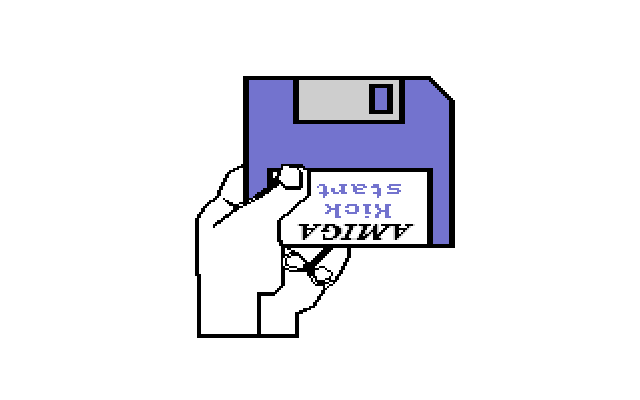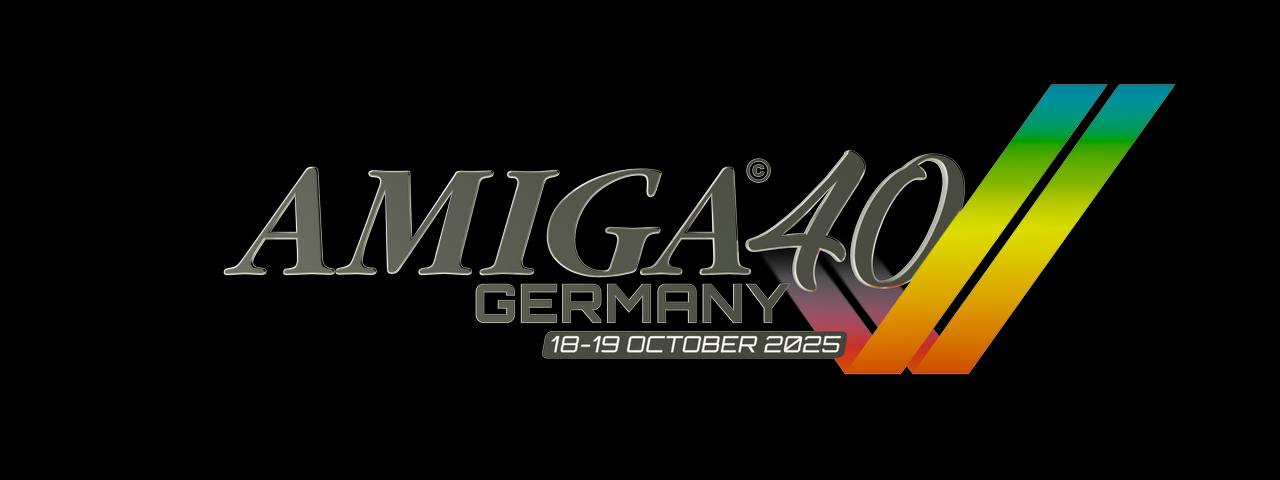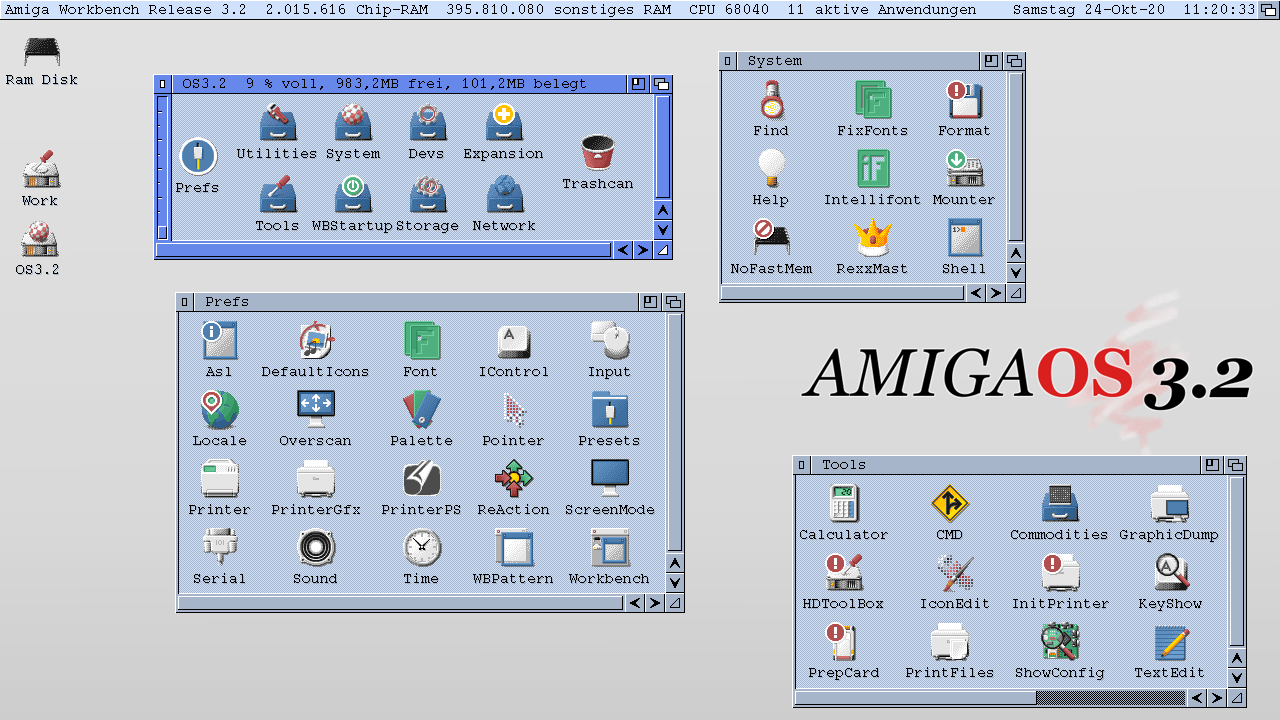AmigaOS is an Amiga computer operating system that was popular among computer users worldwide and gamers in the late 1980s and early 1990s.
While it was eclipsed by Windows and Macintosh in the mainstream market. The Amiga computer remained popular among enthusiasts. In recent years, there has been a resurgence of interest in AmigaOS, as modern computer hardware has made it possible to run the operating system on contemporary hardware.
AmigaOS always remains an important part of computer history. What happened when? When did the Amiga computer arrive?
In this Question and Answers Guide. My goal is to share AmigaOS info with you.
Classic AmigaOS for Amiga 1000, Amiga 2000 and Amiga 500
AmigaOS 1.0 was released together with Amiga 1000 in October 1985. It was the world’s very first 32-bit operating system for home-usage.
Many didn’t get to know AmigaOS 1.0 at all as AmigaOS 1.1 was already out in December 1985.
AmigaOS 1.1 was apparently still a very buggy release, but it improved a lot by getting PAL support. Version library was also added. Both of the two first AmigaOS versions were Amiga 1000 exclusive releases.
Both AmigaOS 1.0 and AmigaOS 1.1 requires only 256KB of RAM to run. The same goes for AmigaOS 1.2 which was released in 1986.
The very first AmigaOS 1.0 only supported NTSC, while the AmigaOS 1.1 introduced PAL support.
RAM Disk arrived with AmigaOS 1.2. This made AmigaOS one of the very first operating systems where you could use the mem space for moving or copying files to it. And that is a full GUI interface where you can drag icons to and from the RAM disk window. RAM disk is a feature that is progressed onto both MorphOS and AmigaOS 4.1. A remarkable AmigaOS feature.
AmigaOS 1.2 came shipped with Amiga 1000 and the new Amiga 2000 in 1986. Then the AtariST killer by Commodore, the Amiga 500 was launched in 1987. The very first Amiga 500 computers did ship with AmigaOS 1.2. 
The very first AmigaOS 1.0 and AmigaOS 1.1 ran from floppy. Both Kickstart and AmigaOS were on separate floppies. So, you had to insert the Kickstart and then AmigaOS for it to boot.
The very first FFS filesystem for AmigaOS only allowed Hard Drives up to 308MB. AmigaOS 1.2 was the first with AutoConfig working somehow, with AmigaOS 1.3 fixing these issues.
AmigaOS should be known as Kickstart, AmigaDOS, and Workbench. Kickstart is the ROM. AmigaDOS is the main operating system and Workbench is the graphical user interface known as GUI. The complete AmigaOS package was groundbreaking to see a fully usable GUI system booting up because of just one floppy.
AmigaOS 1.2 was the first version of the operating system where the Kickstart was put into ROMs. It is also the very first version to include support for hard drive support. The AutoConfig was still a bit buggy, but it was totally fixed in the AmigaOS 1.3 release that came out in 1988.
Most Amiga 2000 computers came with a hard drive installed at the beginning. Amiga 500 in Europe had the ability to get a hard drive but was shipped without it in the beginning. Hard Drives for Amiga 500 could be purchased as an addon.
Commodore released memory expansion for Amiga 1000 because AmigaOS 1.2 required 512KB RAM that both Amiga 2000 and Amiga 500 were shipped with. 
AmigaOS 1.0, AmigaOS 1.1, AmigaOS 1.2 and AmigaOS 1.3 became history in 1990. There was some updates to AmigaOS 1.3 such as bugfix releases in 1990.
The Amiga filesystem FFS could finally handle hard disks up to 2.5 GB in the AmigaOS 1.3.2 version.
AmigaOS 1.3.4 was the last official public release before AmigaOS 2.x took over in May 1990.
Alpha test versions of Workbench v1.4
The operating system for the Commodore Amiga has begun shipping in the U.S. As with all alpha-test versions, specifications are subject to change, but the new Amiga operating system has been dramatically redesigned to allow true multitasking, as well as the ability to view all filetypes, not just those with .info suffixes. Also included is virtual memory support, a feature often seen on the Apple Macintosh. Thus, if you attempt to run a package that needs more memory than is on your Amiga, Workbench v1.4 will start saving the unused areas of memory to disk. When the areas of memory are required again, Workbench v1.4 saves the current memory segments, loading the old memory back in. Other features of v1.4 of the Amiga operating system include extended font support, including scalable, outline, and color fonts. Don’t hold your breath on Workbench v1.4, however, as sources close to Commodore UK suggest that a production shipment of Workbench is not due for another six months.
AMIGA New Amiga OS Tested
WEST CHESTER, PENNSYLVANIA, U.S.A., 1989 JUL 28
Interesting information is that one of the Earliest Amiga 3000 machines used a hardware Kickstart 1.4 ROM to boot to the OS selection menu which then would soft kick either 1.3 or 2.0.
So, when you booted with the SuperKickstart, you were running the Kickstart on that disk, obviously, whereas when you got the 1.4 bootup screen you were actually running the hardware 1.4 ROM.
You can say that Amiga 3000 was the first second-generation Amiga computer that left the AmigaOS 1.x. Then Amiga 500 Plus in 1991 and Amiga 600 in 1992.
The Amiga CDTV however came shipped with Kickstart 1.3 in 1991! It was the last AmigaOS 1.x computer to be released ever.
Thanks to one of the best Workbench pages online for the info. It got so much information about everything you should know regarding AmigaOS.
Welcome to the Amiga. If you like this content. Share and Like. Thanks for reading Amitopia.




